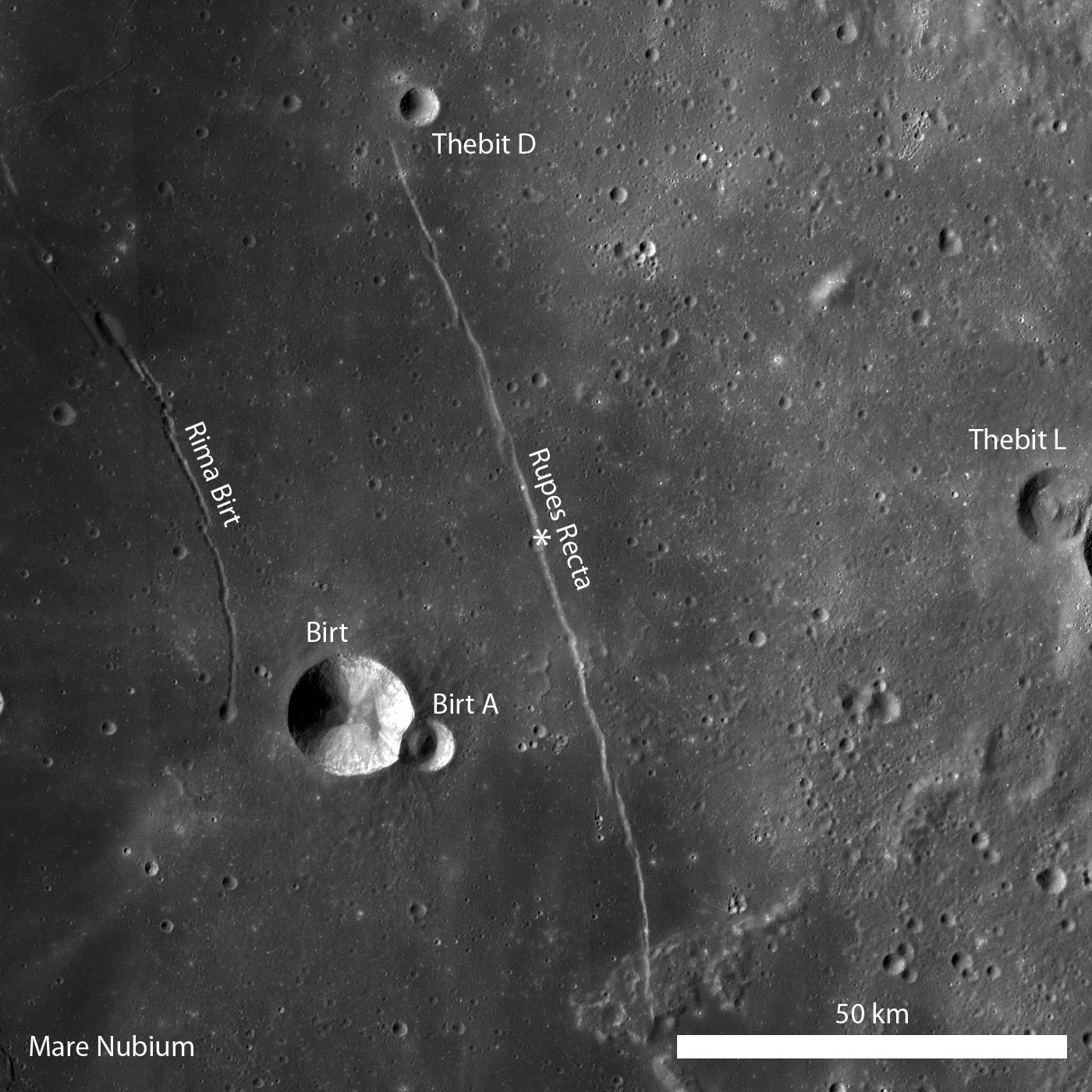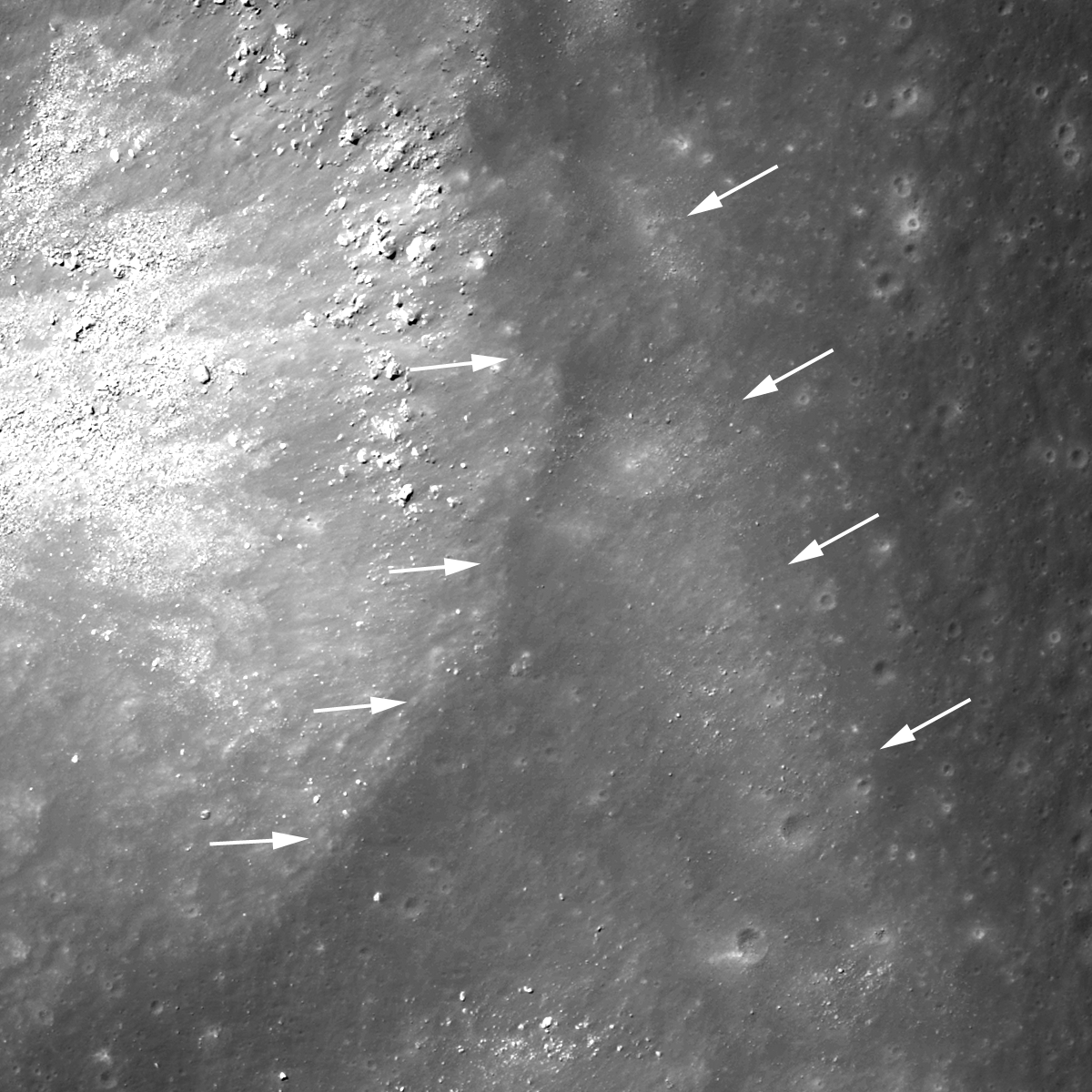
Several weeks ago LROC featured a series of WAC monochrome mosaics of some of the most spectacular sinuous rilles on the Moon (Rimae Posidonius, Vallis Schröteri, and Rimae Prinz). Unlike sinuous rilles, linear rilles (or graben) are not believed to primarily result from lunar volcanism. Linear rilles are surface manifestations of structural faulting that formed when the lunar crust was pulled apart. The widths of these linear rilles range from as little as a few meters to kilometers across; Rupes Recta is between 1 - 3 km wide across its length. In addition, Rupes Recta is composed of several en echelon segments - the linear rille is not a single, uninterrupted 100 km length fault! There are at least 5 large fault segments visible at the LROC WAC scale (100 m/pixel) that range from ~8 km to 50 km in length.
What cross-cutting relationships can you determine in this LROC WAC monochrome mosaic?
How does this full LROC NAC image change your view of Rupes Recta?
Related posts: Linear Graben
Published by Lillian Ostrach on 9 February 2011
